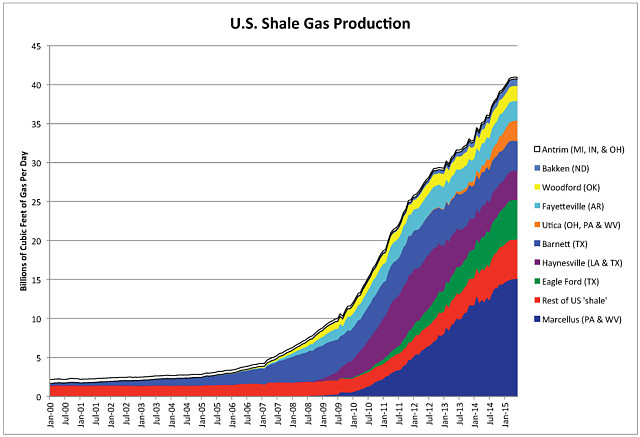Fracking given the green light in the Northern Territory, states could be next

Hydraulic fracturing, better known as fracking, has been given the green light by authorities in the Northern Territory, thereby potentially opening more than half the territory to non-conventional oil and gas exploration.
The first attempts to explore for oil and gas using fracking are expected to commence sometime next year, with many communities in the NT divided by the decision.
Considering the comparatively larger hydrocarbon reserves that fracking facilitates access to, the practice could help generate thousands of new jobs in the NT and possibly put the territory into the same category as Western Australia, the traditional home of Australia’s resources industry.
One of the major reasons fracking has been permitted in the NT is the prospect of billions of tax receipts and sales royalties likely to be generated from large exploration programs and eventual mining activity.
On the other hand, fracking has been the subject of widespread criticism, most notably from environmentalists, that the technique causes substantial and irreparable harm to the natural environment, both below and above ground.
Critics claim that fracking uses high concentrations of harmful chemicals which are used to rupture rock formations below the ground to “unlock” deep-lying hydrocarbon deposits.
In other words, fracking allows substantial quantities of oil and gas that were previously thought as unattainable, to become accessible.
Polarities attract
The issue has polarised both individuals and businesses in the NT, many of whom believe fracking threatens not only biodiversity and public health, but also water supplies which can become notoriously scarce in Australia, a country famous for its arid climate.
However, following the decision to allow fracking on almost 700,000 square kilometres of the territory, NT chief minister Michael Gunner said the industry would create jobs; adding that 49% of the NT will be “frack-free”, including in national parks, conservation areas, Indigenous protected areas, towns, residential and strategic assets, and areas of high cultural, environmental or tourism value.
Mr Gunner also cited an independent report published last month, overseen by Justice Rachel Pepper, which concluded that hydraulic fracturing of oil and gas deposits could be managed and regulated.
The report made 135 recommendations including the introduction of no-go zones and limits various approval guidelines — all, of which, have been considered and accepted by the government according to Mr Gunner, thereby ensuring any risks associated with fracking are duly mitigated.
Raising the flow
Fracking has literally transformed the dynamics of the oil industry over the past decade and has catapulted the US into becoming one of the world’s heftiest oil producers.
Currently, the US produces around 10 million barrels per day (MMbpd) — a feat last achieved way back in 1970 — most notably from the Permian Basin located western Texas and south-eastern New Mexico.

Source: EIA and Labyrinth Consulting Services, Inc.
The EIA forecasts that the US will soon overtake Russia as the world’s leading oil producer with what’s known as the “shale gale” helping the US to create tens of thousands of jobs over the past decade and helping the US to reduce its reliance on oil imports, which are down from a peak of 13.4MMbpd in 2006 to around 2.5MMbpd in October 2017.
That’s quite a comeback; and Australia intends to follow suit, hence the decision to permit fracking in the NT.
Fracking in other territories and states
Outside of the NT, Australia’s five states have slightly different views on fracking — although most policymakers in each state are apprehensive of fracking.
Victoria, NSW, WA, Tasmania and the NT, have complete or partial bans on coal seam gas exploration or have an all-out moratorium on fracking.
At the federal level, Australia’s prime minister, Malcolm Turnbull, wrote to the NSW premier Gladys Berejiklian, the Victorian premier Daniel Andrews, and the NT’s Mr Gunner last year, asking them to lift their blanket moratoriums on new gas production and warning they were “putting Australia’s energy security and industries at risk”.
Victorian officials banned ban onshore unconventional gas exploration including fracking and coal seam gas (CSG) last year. WA currently has a 12-month moratorium on fracking which will be reviewed next year.
Tasmania also has a moratorium in place on fracking until March 2020, although shale oil and gas exploration is permitted.
In Queensland, commercial production of CSG has grown rapidly, driven by the state’s objective of ensuring gas production accounts for at least 18% of the state’s energy generation by 2020.
South Australia is currently locked in a battle of words over fracking. The coalition is hailing gas as key to improving the stability and affordability of electricity, but the state opposition has a policy of an unlegislated 10-year moratorium on fracking in SA’s south-east.
The Turnbull Government has chosen the Cooper Basin in SA as the site for an independent scientific study that will assess the environmental safety of fracking with results likely to match those from the NT and pave the way for fracking to ease SA’s electricity crisis sometime next year.
